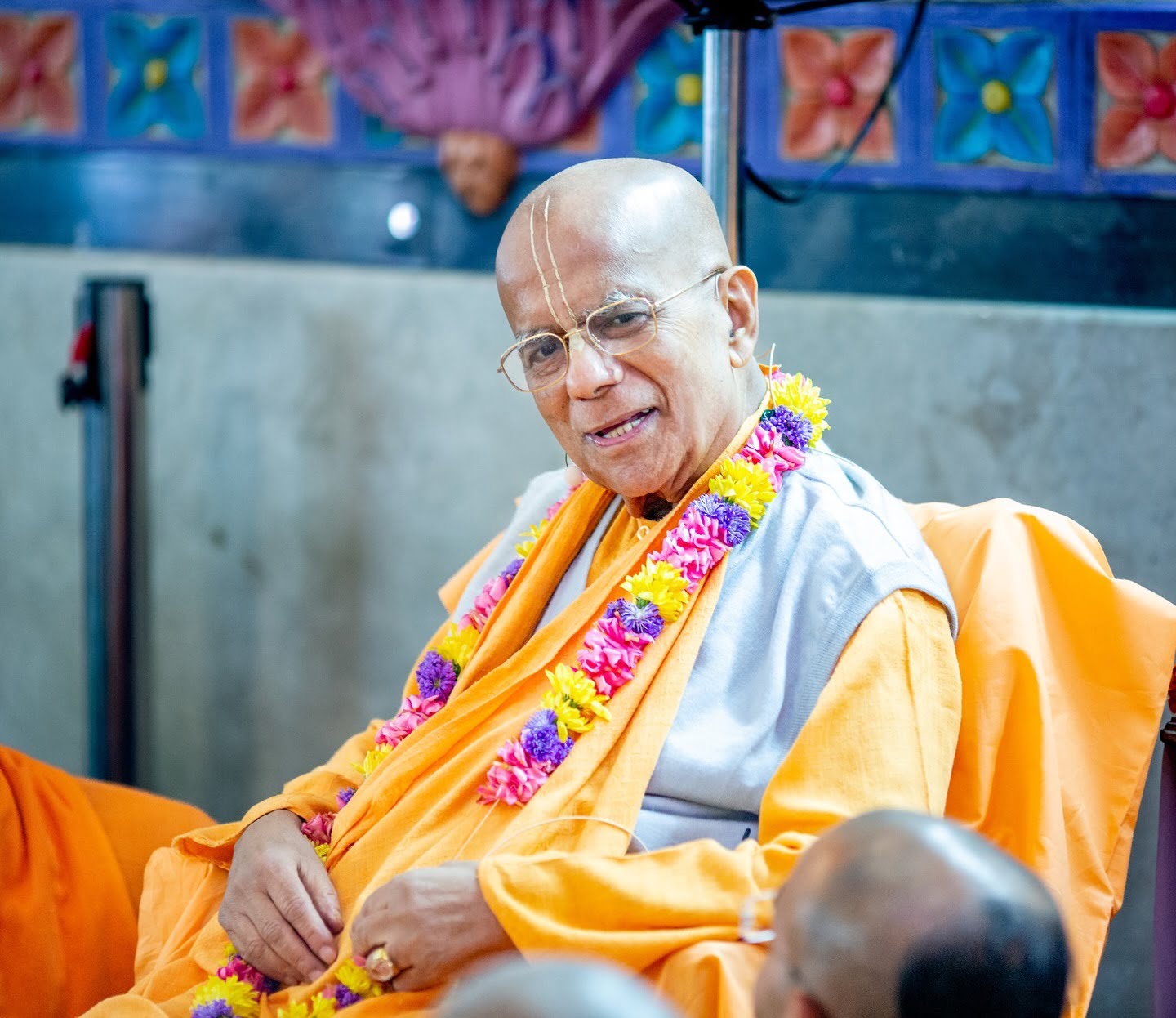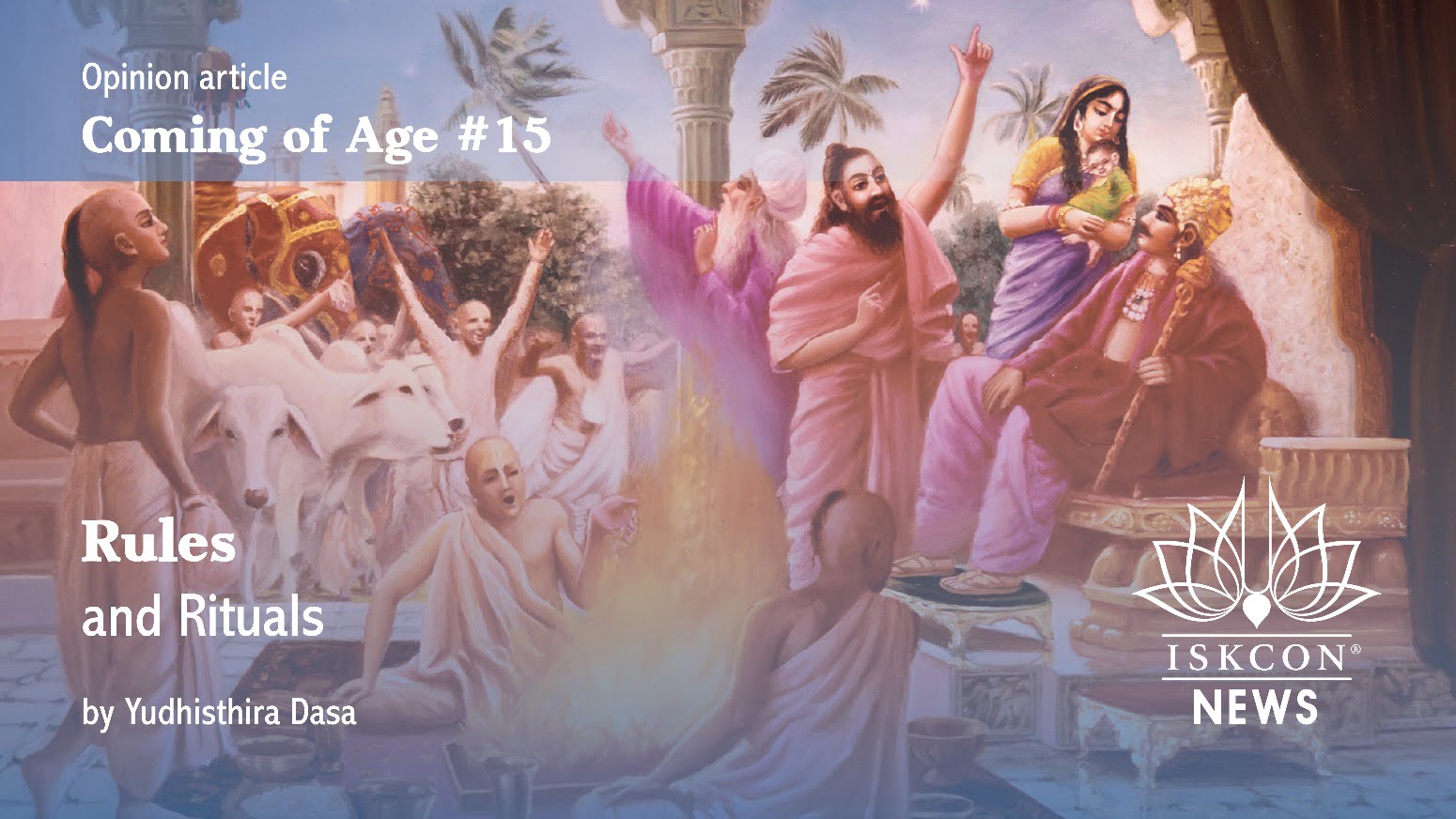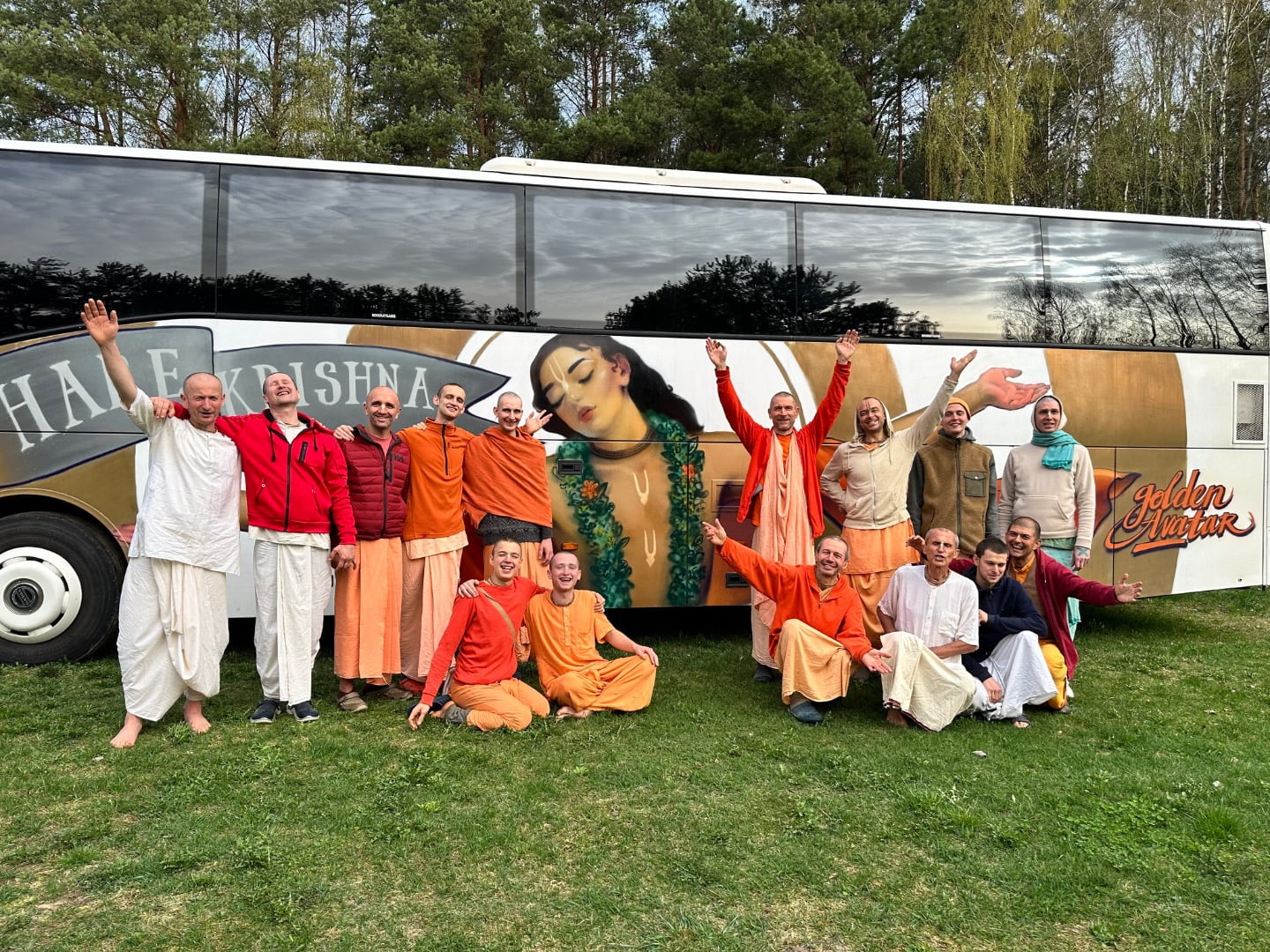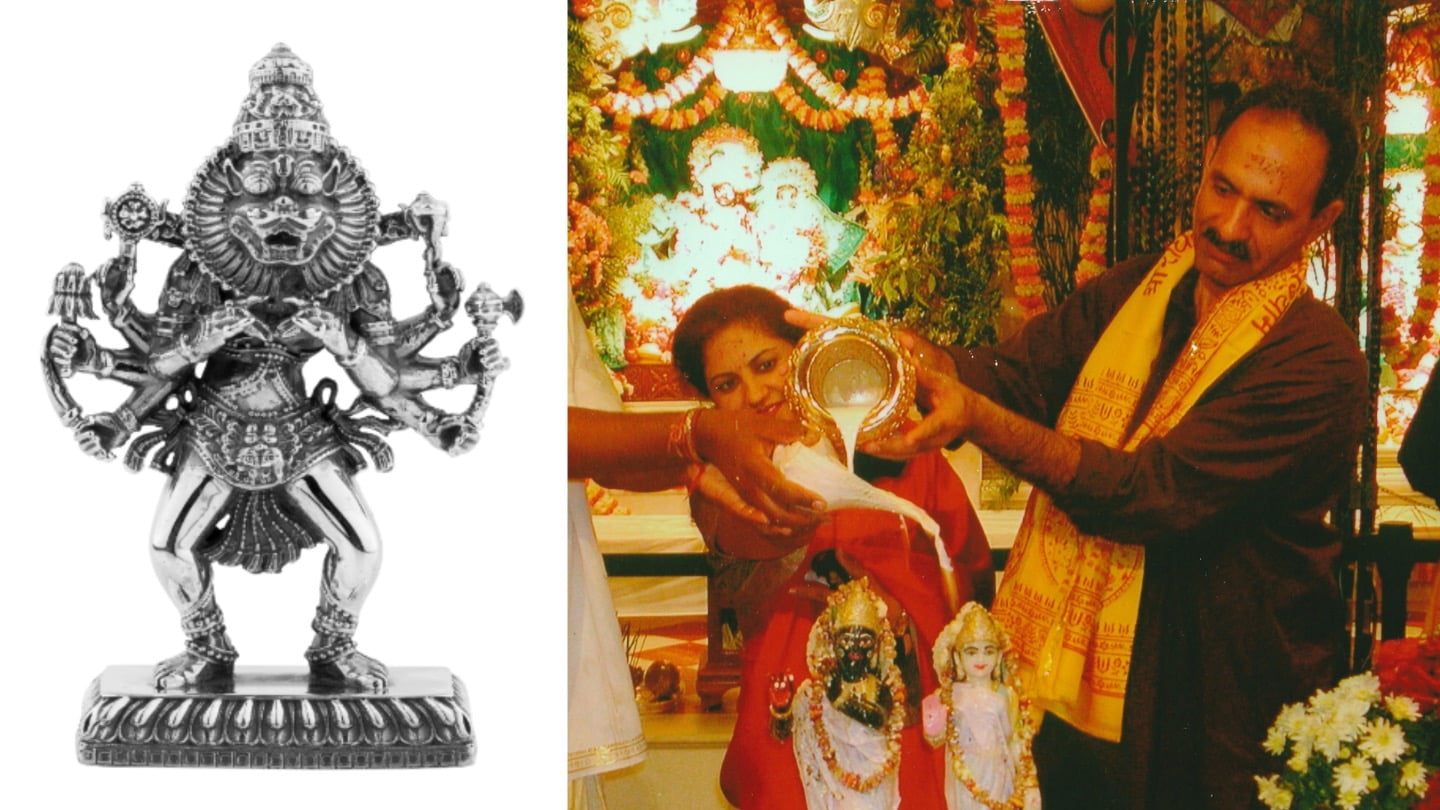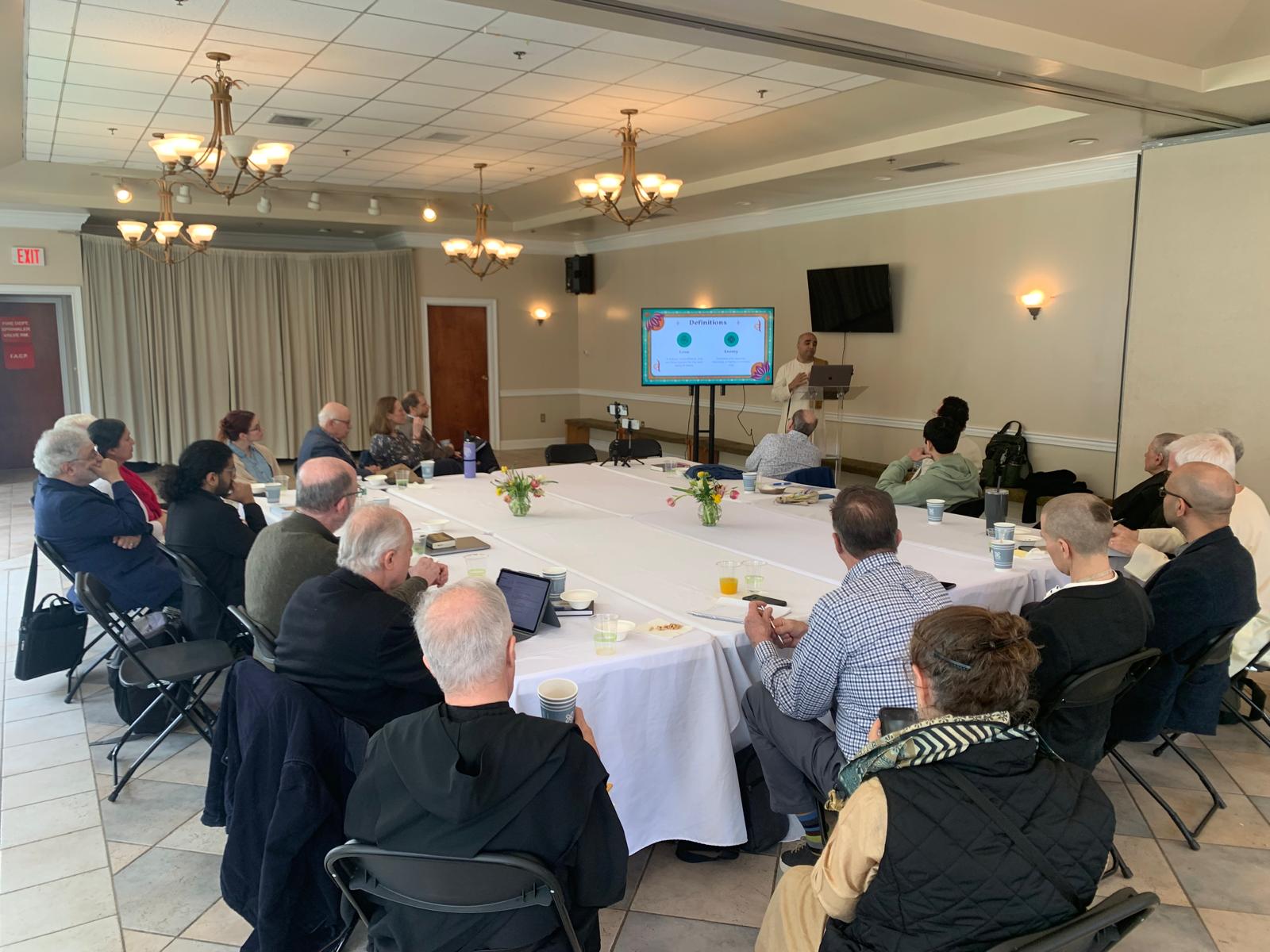Devotees Soak up Holy Name at 3rd Level Japa Retreat
By Madhava Smullen | Oct 10, 2010
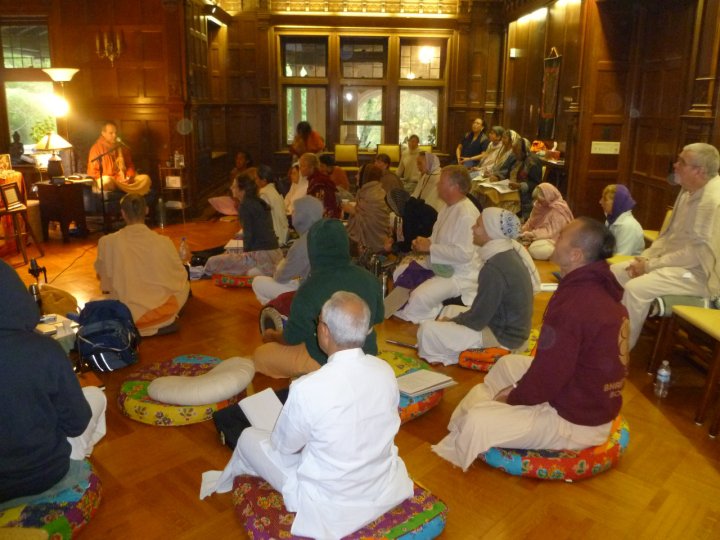
Thirty devotees from the East Coast and across the US attended Level 3 of Bhagavat Life’s Japa Retreat from Saturday September 25th to Sunday October 23rd, continuing their mission to develop a deeper relationship with the Holy Names of Krishna.
Run by Purusa-Sukta Dasa and Divyambhara Dasi of New York’s Bhakti Center, Bhagavat Life is an educational organization focused in North America that offers several different programs that facilitate devotees’ delving deeper in their spiritual lives. Their multi-level Japa Reatreat program, which offers an immersive experience in the ancient practice of meditative chanting of God’s names, is especially popular.
Most recently, Level 1 was offered in 2008 at a rented Zen Buddhist facility, in Menlo, Upstate New York.
Level 2, meanwhile, was offered in 2009, at the Delphi Christian retreat just outside Atlanta, Georgia.
This year’s Level 3 retreat was held at the Seva Retreat Center in Philadelphia, an organization affiliated with ISKCON’s Food for Life charity.
The Seva Retreat is set in the Elkins Estate, a 42-acre walled campus with sprawling lawns, its own gardens and greenhouses, two large ponds, a babbling stream running through the property, and two historic mansions.
The Japa Retreat attendees who arrived from Washington, New York, North Carolina, Florida, San Antonio, Houston, and even South Africa stayed in the charming 31,000 square foot Chelten House, a turn-of-the-century Tudor mansion used as a women’s retreat by the Dominican Sisters of St. Catherne de Ricci for 75 years.
Devaprastha Dasa of Potomac, Maryland, who works as vice president of publishing systems at National Geographic and attended the retreat with his wife Padma-Malini Dasi, says that while some have criticized Bhagavat Life’s japa retreats for being too expensive—Level 3 cost $900—the fee is is completely worth it, and very reasonable by modern standards.
“I go to professional conferences and seminars from time to time because of my job, which cost $3,000 or more,” he explains. “And they’re not nearly as nicely arranged as the Japa Retreat was. The accommodations were first class—staff made sure everyone was comfortable in their rooms and had everything they needed. The sanctified prasadam food was also first class, served buffet-style. Drinking water and hot tea was available at all times. Everyone was provided with pads and pens to take notes, and all the flyers, handouts and other materials were very well designed and printed. It was all done at the highest level of modern professionalism.”
While Levels 1 and 2 of the Japa Retreat lasted eight days each, Level 3 ran for nine consecutive days.
Each day began early in the morning, with the attendees chanting japa on their beads from 4:30am to 6:45am in the Chelten House’s main hall, which had been transformed into a temple room.
From 6:45 to 7:10am, they held kirtan—loud, congregational chanting of God’s names—and greeted the two-foot high Deities of Radha Nila Madhava; as well as the personal Deities—Radha Kaniaya-lal—of Sacinandana Swami, who came up with the seed idea for the Japa Retreat and is the main speaker at many of its events.
Murti forms of Haridas Thakura—revered by Gaudiya Vaishnavas as the most devout chanter of God’s names—and ISKCON Founder Srila Prabhupada, brought by speaker Giriraja Swami, were also present.
The kirtan was followed by a two-hour class from 7:00am to 9:00am, given by the two Swamis and featuring a combination of scriptural, philosophical teachings, and stories about instructional experiences they had had with Srila Prabhupada regarding Japa.
Breakfast was then served, with class resuming from 11am to 1pm. Attendees then took lunch, followed by a break until 4:00pm, when they again regrouped for class until 6:00pm. They then had dinner, followed by kirtan, reading and other devotional evening activities from 7:00pm until 9:00pm.
This was the schedule for five out of the nine days. The others, however, had an added element that made things just a little bit more interesting.
During Level 1 of the Japa Retreat, attendees had had one day during which they chanted 64 rounds—four times more than the regular quota of 16. At Level 2, they had two 64-round days. Level 3, however, had no less than four 64-round days spread throughout the length of the retreat.
These days began just like the others, with attendees chanting 16 rounds in the early morning. At 9:00am, however, they would begin a mauna vrata, or vow of silence. They would then chant from 9:00am all the way until 4:00pm, and would even take their meals in silence. Speaking was only allowed during evening kirtans and readings.
Devaprastha, who explains that chanting 64 rounds takes eight to eight and a half hours—a full average work day—says, “After a while, it really shut down the mind, cleared all that mental noise. I became absorbed. Of course, the mind still did some wandering. But it became much easier to keep it focused, because any thought other than thoughts of Krishna started to become very unpalatable. It’s like when you smell foodstuffs that are inedible, they’re of no interest to you and are even repulsive. Similarly, I would automatically gravitate towards the temple room, the Deities, and chanting more attentively. Nothing else had much taste to it.”
Although retreat organizers discouraged attendees from too much non-verbal communication, as this would be against the focus-only-on-Krishna spirit of mauna vrata, devotees still silently found ways to express their affection for each other and serve each other without needing to communicate.
“You could see this most visibly in the prasadam hall,” Devaprastha says. “One devotee would find another a cushion, or serve them seconds, or pour them a drink of water. It was very sweet.”
For Devaprastha, the Level 3 Japa Retreat was quite different than what he had experienced in the previous two levels.
“Level 1 was a very profound experience for me,” he says. “It was the first time I had ever chanted 64 rounds in one day, and it left me with some very very deep realizations about the value of chanting and of devotee association.”
Level 2 was more difficult for Devaprastha in a personal sense, because, he says, he realized how shallow his spiritual life was compared to what it needed to be.
But Level 3 was the most difficult. “I’m used to sitting in an office chair, or moving around doing different things throughout the day,” he says. “Although we weren’t restricted from getting up and walking around, for all practical purposes it was just sitting in the same room on the same cushion all day, every day for a week. The physical austerity was challenging—my back and neck would hurt, and it would distract my mind. It was difficult just trying to keep my mind and body still and focused.”
He adds: “Level 3 wasn’t a profound experience emotionally or spiritually the way the first two where. In fact, it felt more like a sustained effort, without real visible results. However, I had a very deep realization that this was necessary work, and that it was having a very powerful effect, even though it was one that was going on under the surface. Whether or not we’re aware of the effect of Krishna consciousness, it’s there. And gradually, gradually, it becomes visible.”
Devaprastha compares this process to a farmer plowing a field. “Plowing a field is a lot of work, and at the end of the day you still don’t have any crops—all you’ve done is loosened up the ground,” he says. “But then when you go to plant vegetables, they’ll take root very quickly. So it’s an essential process, although it may not seem like it—if you don’t do that plowing, then nothing will grow, because the soil’s too hard.”
For Devaprastha, the Retreat also really brought home the importance and potency of devotee association. “The attendees were a very high calibre group of devotees,” he says. “There were a lot of Prabhupada disciples and other senior devotees, but whether young or old, all were very dedicated, sincere and serious about Krishna consciousness. Just being in their association was very transformative.”
After leaving the retreat, Devaprastha feels a renewed focus and dedication to Krishna consciousness. “I have a high-profile, very demanding job, where I work with a lot of very high-end professionals—but really the only thing that matters is spiritual life,” he says. “Only becoming firmly situated in the understanding that we’re not this body, but a spiritual entity and eternal servant of Krishna will make us happy. Everything else is just a painful distraction.”
Devaprastha feels that the japa retreat experience—whether connected with Bhagavat Life or locally organized—should be a part of every temple or outreach center in ISKCON. “The movement has grown over the years and become quite strong,” he says. “But we do get sidetracked into thinking so many other activities are important. After all, we are the Hare Krishna movement: The Holy Name is our essence. And I think that keeping that in the forefront of our consciousness, deeply embedded in everything we do, is critical.”
Devaprastha would recommend taking a Japa Retreat to all serious devotees. “It transformed my attitude towards chanting from a vow I had to keep, to an activity I look forward to engaging in,” he says.






